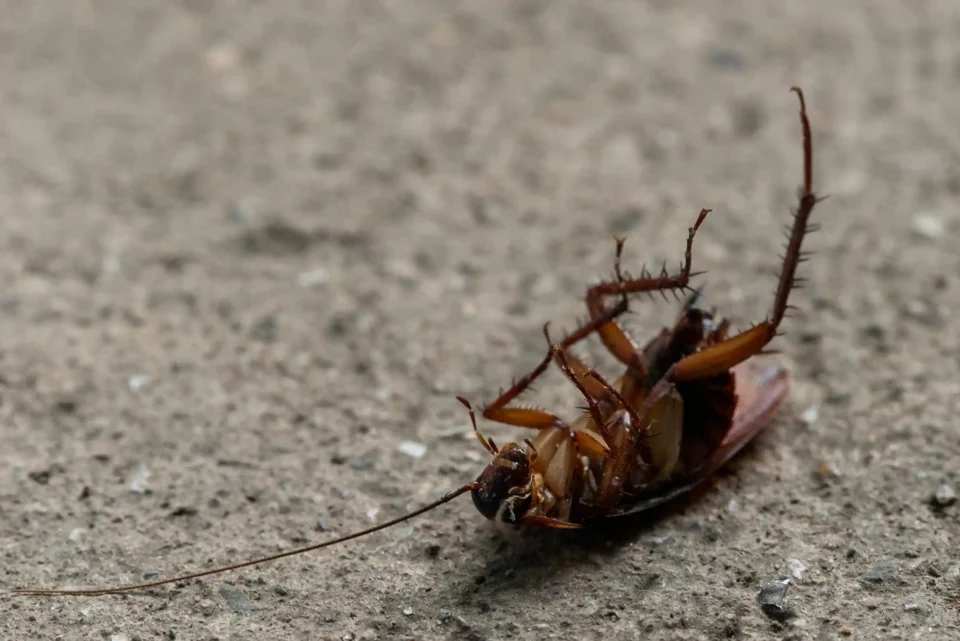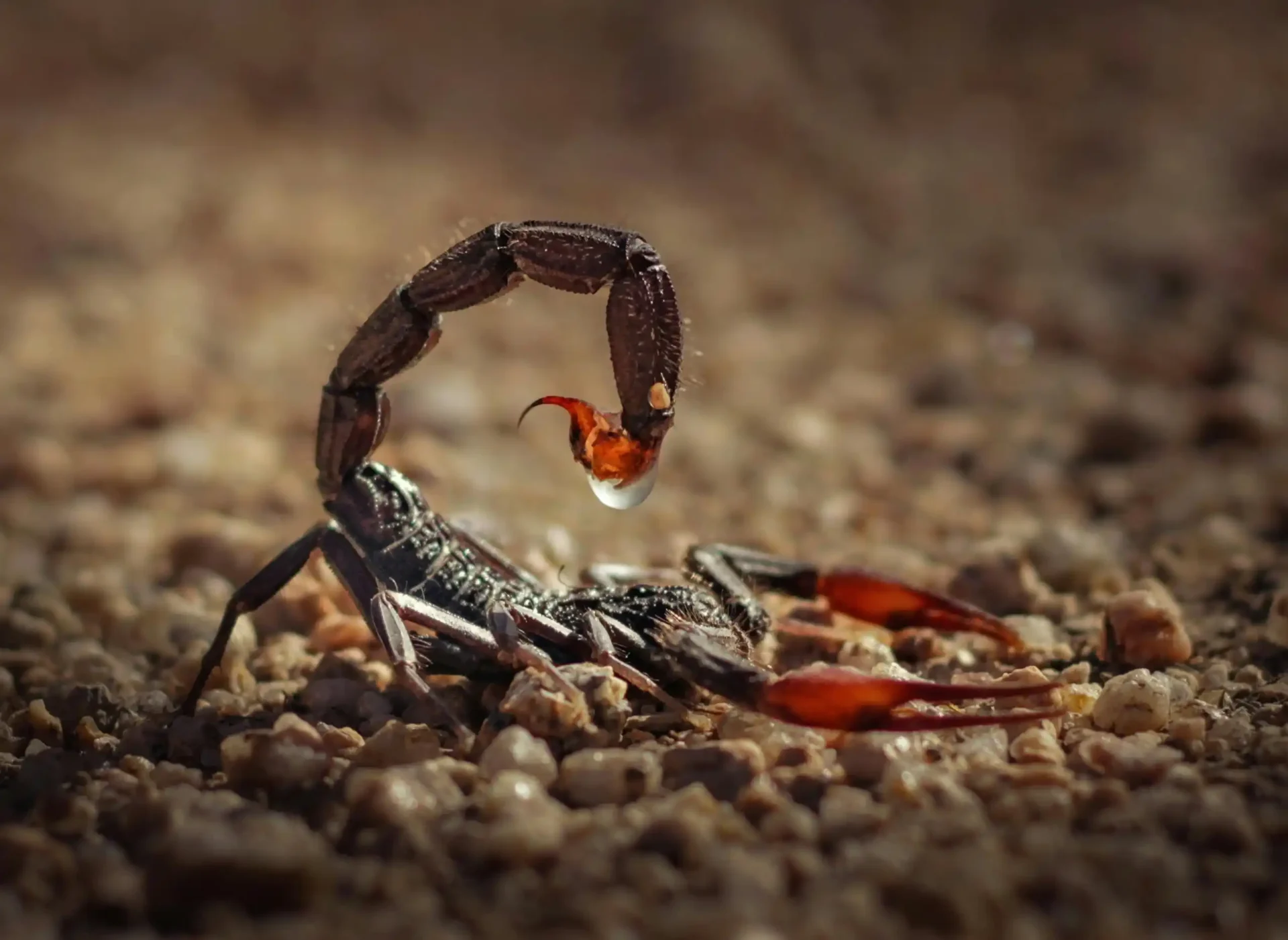Living in Phoenix means enjoying beautiful weather and vibrant landscapes. However, it also means dealing with a variety of pesky critters that can invade our homes and gardens. In this blog, we’ll explore some of the most common pests found in Phoenix and provide practical tips on keeping your home pest free.
1. Dealing with the Desert Ant Army
Ants in Phoenix are persistent and can appear anywhere in search of food and water. These small invaders often gain entry to homes through even the tiniest cracks and crevices. To combat the desert ant army, it is crucial to maintain a clean living environment, ensuring that food is stored in sealed containers and crumbs are promptly cleaned up. Additionally, sealing entry points can prevent them from making their way inside. Regularly inspecting your perimeter and using natural deterrents, like vinegar or citrus, can also help keep them at bay. By staying vigilant, you can enjoy a pest-free home environment.
Moreover, understanding which ant species are common in your area can aid in developing specific strategies. The Argentine ants and the Southern Fire ants are two culprits known to plague Phoenix residents. Identifying the species can help in selecting the most effective deterrents or if professional intervention is needed. Remember, a well-maintained garden also plays a role in keeping ants outdoors, by ensuring that mulch and foliage are kept at least 12 inches from the house foundation.
2. Scorpions: The Desert Dwellers
Scorpions are common in the Phoenix area, presenting a unique challenge because they can be challenging to spot. These nocturnal predators usually hide during the day, making it essential to identify their hiding spots around your home. Ensuring that your yard is free from debris, woodpiles, and dense vegetation is crucial since these areas can serve as a welcoming habitat for scorpions. Using sticky traps around entry points can help in monitoring their presence and reducing populations indoors.
Preventing scorpions from entering your home involves creating a physical barrier. Installing weather stripping on doors and windows, repairing torn screens, and sealing cracks can effectively keep scorpions at bay. If scorpions are a considerable concern in your neighborhood, consider professional pest control services for more tailored solutions. Engaging in these preventative measures is vital not only to avoid the sting but also to maintain a comfortable living environment.
3. Cockroaches: The Unwanted Guests
Cockroaches are not just a nuisance but can also pose health risks as they are known carriers of bacteria and allergens. Spotting one cockroach is often a sign of a larger infestation, as these resilient pests reproduce quickly and prefer hiding in dark, damp areas. To effectively combat cockroach infestations, it is essential to keep your kitchen and bathrooms dry and clutter-free. Regularly empty the trash, fix leaks promptly, and avoid leaving pet food out overnight.
In addition to cleanliness, targeting cockroach hotspots with bait traps or gels can be an effective measure. These products not only help reduce populations but also prevent future infestations. Baits are specifically designed to attract cockroaches, leading them to a slow-acting poison that they carry back to their nests, thereby affecting the entire colony. Keeping vigilant and employing a combination of these strategies will help create a cockroach-free space in your home.
4. Battling Bed Bugs
Bed bugs are notorious for their elusive nature and ability to quickly infest an area. These small pests hide in mattresses, bed frames, and even within the nooks and crannies of furniture. The first step to protecting your sleeping area is regular inspection, especially after traveling, as bed bugs often hitchhike in luggage. Washing and drying bedding at high temperatures is an efficient method of killing both bed bugs and their eggs.
Another preventative method is to encase your mattress and pillows in specially designed covers, which prevent bed bugs from penetrating the fabric. If you suspect an infestation, vacuuming the affected areas and disposing of the vacuum bag immediately can help reduce the population. Engaging a professional pest control service may be necessary to fully eradicate a severe infestation, providing peace of mind and a good night’s sleep.
5. Mosquito Madness
Mosquitoes are more than just annoying; they can carry diseases such as West Nile Virus and Zika Virus. Effective strategies to combat these pests include eliminating standing water where mosquitoes breed. Regularly emptying plant saucers, cleaning gutters, and changing water in birdbaths can significantly reduce mosquito populations. Additionally, installing mesh screens on windows and doors prevents mosquitoes from entering your home.
Consider planting mosquito-repelling plants, such as citronella and lavender, around your yard to naturally deter them. Personal protection using insect repellents containing DEET, and wearing long sleeves during peak mosquito activity hours can also reduce the number of bites. By taking these precautions, you can enjoy your outdoor spaces without the persistent buzz of mosquitoes in the background.
6. Keeping Spiders at Bay
While spiders help control other insect populations, many people prefer not to share their homes with these eight-legged creatures. A key prevention strategy is to eliminate the supply of food by managing other pest populations. Sealing windows, doors, and cracks in your foundation can provide an effective barrier against spider entry.
Spiders are often found in cluttered areas looking for insects to prey on. Regular decluttering and vacuuming, especially in basements and attics, can significantly reduce the number of spiders indoors. Additionally, using essential oils like peppermint can act as natural deterrents due to their strong scent, which spiders find unappealing. Implementing these tips can help keep your home spider-free and more inviting.
7. Crickets Cacophony
Crickets can create noise pollution with their chirping and are especially active during the warmer months. These insects are attracted to moist environments, so maintaining a dry home can deter them. Fixing leaks, managing outdoor lighting, and keeping your lawn mowed are practical steps to minimize cricket attraction.
On the other hand, crickets are drawn to bright lights at night. Switching to yellow or sodium vapor lights, which are less attractive to insects, can help mitigate their presence. Sealing any potential entry points around your home and using sticky traps in areas where crickets are likely to enter can capture and control their populations, transforming your home into a quieter, more peaceful environment.
8. Termite Troubles
Termites can silently destroy your home from the inside out, making them one of the most dangerous pests for homeowners. Early detection is key to preventing extensive damage. Keep an eye out for signs such as mud tubes on your walls or hollow-sounding wood beams. Regular inspections by a professional can help in detecting termite activity early.
Effective prevention involves reducing wood-to-soil contact and ensuring that your home’s foundation is well-aerated. Removing wood debris and maintaining a barrier between any wooden parts of your home and the soil is crucial to keeping termites away. For robust protection, a termite treatment plan can safeguard the structural integrity of your residence for years to come.
9. Rodents: Uninvited Housemates
Rodents such as mice and rats can cause damage and carry diseases, making it essential to address any possible infestations quickly. Their gnawing ability allows them to enter through small holes that may not seem a threat at first glance. Sealing these points of entry with steel wool or caulk is one of the best preventive measures.
Keeping a clean environment is also crucial, as rodents are attracted to food scraps and crumbs. Regularly taking out the trash, storing food in airtight containers, and maintaining general cleanliness can make your home less inviting to these pests. For more persistent infestations, humane traps and consulting with a professional pest control service can effectively manage and eliminate rodent populations.
10. Silverfish: The Silent Destroyers
Silverfish love damp areas and are often found in bathrooms, basements, and kitchens. These pests can damage paper goods and clothing, making their presence a nuisance. To reduce their attraction, keeping these areas dry and ensuring good ventilation is a priority.
Dehumidifiers can be particularly useful in reducing moisture levels, thus making your home less hospitable to silverfish. Additionally, sealing food in airtight containers and promptly fixing leaks will further discourage their presence. Employing these strategies helps keep your home silverfish-free, preserving the integrity of your possessions.
11. Challenges with Centipedes
While centipedes can help control other pests, they are often unwelcome indoors due to their unsettling appearance. These fast-moving pests are attracted to high-moisture areas and can often be found in basements or bathrooms. Reducing humidity by ventilating these spaces is an effective deterrent.
Regularly clearing clutter and maintaining a clean home can also prevent centipedes from finding places to hide. Since these creatures feed on other small insects, controlling and reducing the primary insect populations will naturally reduce centipede occurrences. A proactive approach to home maintenance will help keep centipedes and a variety of other pests at bay.
12. Beetles: Nature’s Intruders
Beetles can be both an indoor and outdoor pest, impacting gardens and stored foods. In Phoenix, you might encounter beetles in your pantry, requiring regular cleaning and rotation of food to mitigate their impact. Airtight containers help prevent infestations in stored goods.
Outdoors, maintaining your garden by removing dead plants and leaves reduces the attraction for beetles. Applying diatomaceous earth around garden beds can act as a natural repellent to keep beetle populations under control. By adopting an integrated approach to beetle management, your home and garden can remain beetle-free.
13. Preventing Flea Infestations
Fleas can be a significant problem for pet owners as they cause discomfort and can spread quickly. Regular grooming and bathing of pets, along with using veterinarian-recommended flea treatments, are essential preventive measures. Vacuuming regularly and disposing of the vacuum bag can prevent flea eggs from hatching indoors.
For outdoors, keeping your lawn mowed and trimming shrubs can minimize flea habitats. If an infestation occurs, treating both your pet and the home environment simultaneously is crucial. Knowing how to use various flea control products and consulting with pest control experts ensures that your home becomes a flea-free zone.
14. Keeping Moths Out of the Wardrobe
Moths can harm clothing and textiles by laying eggs that hatch into fabric-eating larvae. Proper storage solutions include using airtight plastic containers and vacuum bags which protect garments from infestation. Cleaning clothes before storing them, especially if they are woolen, reduces the chances of attracting moths.
Using natural repellents such as cedar blocks or lavender sachets inside closets can deter moths while imparting a pleasant scent. Regular airing out of closets and storage areas also prevents mold and must that attract moths. Implementing these methods can help safeguard your wardrobe from these fabric-hungry pests.
15. Wasp and Bee Dilemmas
Wasps and bees are beneficial for the ecosystem but can become a problem when they nest close to human spaces. Identifying and removing early-stage nests can prevent future issues. It is recommended to seek professional help to safely remove established nests, especially if you or your neighbors have allergies.
To avoid attracting these stinging insects, cover food and drinks during outdoor activities and avoid sweet-smelling perfumes. If you need continuous support, reaching out to professional pest control services can ensure your property stays wasp and bee-free.
